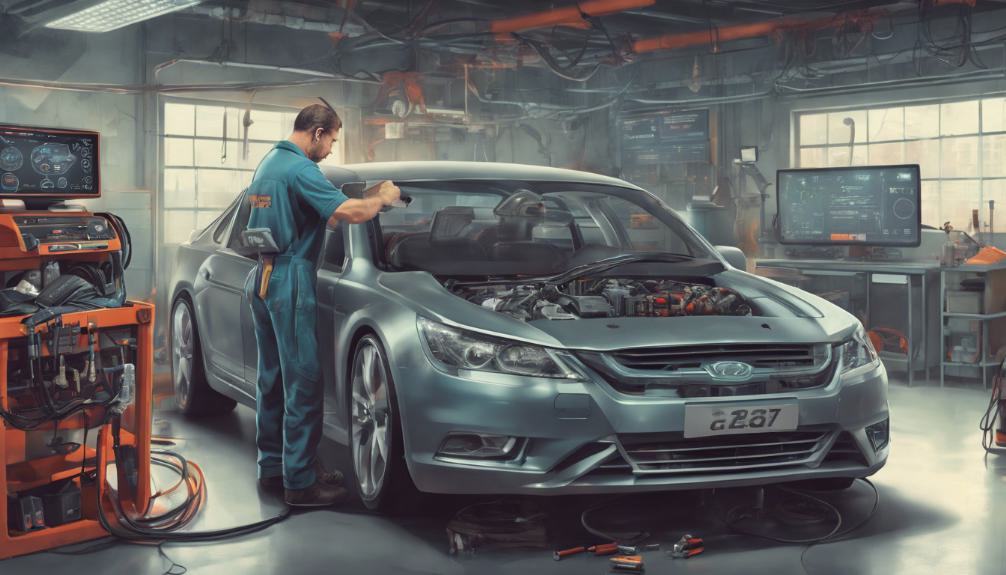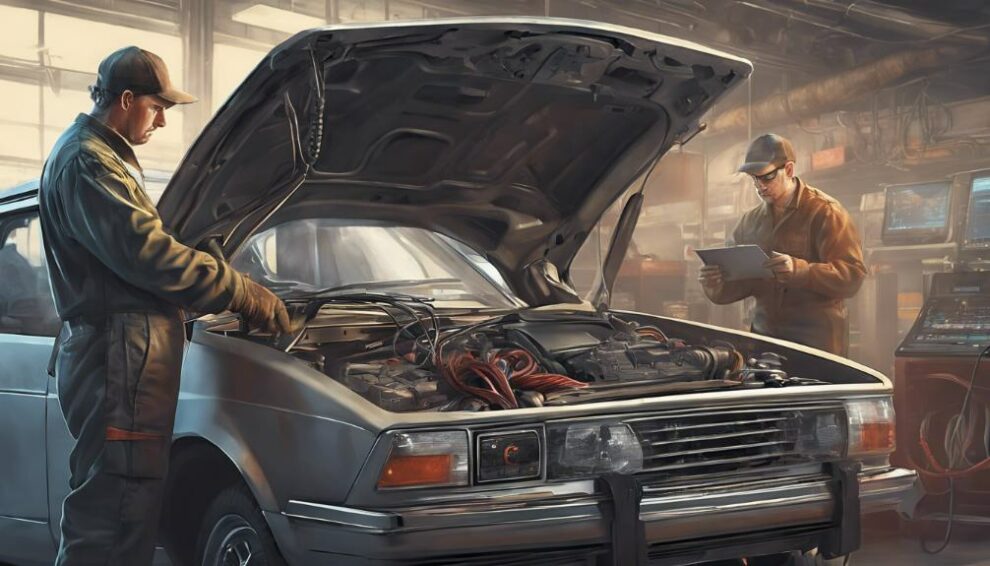Resetting the PCM is crucial for peak engine performance. It recalibrates the engine control module and enhances efficiency by adjusting the air/fuel ratio. You may need to reset the PCM if you experience a persistent check engine light, stalling, decreased fuel efficiency, or unusual gear shifting. By resetting the PCM, you can improve performance and maintain your vehicle's efficiency. To do this properly, disconnect the negative battery terminal and follow the correct procedures outlined in the service manual. By ensuring your PCM is reset correctly, you can optimize your vehicle's performance and longevity.
Key Takeaways
- Recalibrates engine control module for peak performance.
- Resolves issues like stalling, misfires, and decreased efficiency.
- Restores PCM to factory settings for optimal adjustments.
- Enhances air/fuel ratio adjustments and overall efficiency.
- Essential for maintaining expected vehicle performance and efficiency.
Importance of PCM Reset

Resetting the PCM is vital for ensuring peak engine performance by clearing learned adaptive values. By performing a PCM reset, you allow the engine control module to recalibrate and adapt to any new parts or modifications you have made. This process is essential for improved efficiency and enhanced diagnostics.
When you reset the PCM, you're basically restoring it to its factory settings, which can aid in diagnosing persistent issues that may be affecting your vehicle's performance. Moreover, resetting the PCM can help in resolving any electrical problems that may have been triggered by abnormalities in the PCM. This reset can also enhance adjustments to the air/fuel ratio, leading to overall better performance of your vehicle.
Signs Requiring PCM Reset
When issues such as a persistent check engine light or stalling become apparent in your vehicle, it may be time to contemplate a PCM reset. A check engine light that remains illuminated despite repairs and maintenance efforts could indicate underlying issues that necessitate a reset.
Persistent stalling or misfires are also signs that your PCM may need to be reset to recalibrate the engine functions. If you notice decreased fuel efficiency and power output, a PCM reset could help address these performance issues.
Starting problems requiring frequent jump-starts may be resolved by resetting the PCM to guarantee proper starting functions. Furthermore, unexplained changes in gear shifting and engine performance could be indicators that a reset is needed to restore peak operation.
Common misconceptions about PCM resets include expecting instant fixes for all vehicle problems, while troubleshooting tips often involve checking for loose connections or damaged wiring before opting for a reset.
Benefits of PCM Reset

For better performance and efficiency, resetting the PCM offers several benefits that can enhance your vehicle's overall operation. Here are some ways in which resetting the PCM can benefit your vehicle:
- Improving Performance: By restoring the computer adaptive memory to stock settings, the PCM can optimize the performance of your vehicle, guaranteeing it runs at its best.
- Enhancing Engine Component Changes' Impact: Resetting the PCM allows for better integration of any changes made to engine components, maximizing their effectiveness and ensuring smooth operation.
- Optimizing Efficiency: Post-reset, the PCM can make more precise air-fuel ratio adjustments, leading to improved fuel efficiency and overall performance.
These benefits highlight the importance of resetting the PCM to maintain your vehicle's performance and efficiency. By taking this step, you can make sure that your vehicle operates at its peak potential and delivers the performance you expect.
Proper Methods for PCM Reset
To reset the PCM properly, consider utilizing methods like disconnecting the negative battery terminal and holding the key in the START position for 15 seconds. Another option is loosening the positive terminal and touching it to the negative side for 30 seconds. Following the instructions outlined in the Dodge service manual is recommended for a correct PCM reset. Moreover, you can ground the positive cable to the negative terminal for 30 seconds before reconnecting to aid in resetting the PCM. It's important to take precautions such as disconnecting the negative battery terminal before manipulating fuses for a safe reset process.
Common misconceptions about PCM resetting may lead individuals to use incorrect methods, potentially causing harm to the vehicle's electronics. When in doubt, it's advisable to consult the manufacturer's guidelines or seek professional assistance. DIY troubleshooting can be rewarding, but it's essential to proceed with caution and follow accurate steps to avoid further issues with the PCM.
Preventing PCM Issues

Regularly resetting the PCM helps prevent issues related to outdated adaptive memory. By resetting the PCM at appropriate intervals, you can guarantee that your vehicle operates at peak performance and efficiency. Here are some key points to take into account for preventing PCM issues:
- Improving Performance: Resetting the PCM allows for the recalibration of fuel-air ratio adjustments, leading to smoother engine operation and enhanced overall performance.
- Reset Frequency: Establishing a regular schedule for PCM resets can help avoid the accumulation of outdated adaptive memory, reducing the risk of performance issues and facilitating the adaptation to new components.
- Optimal Engine Control: Preventing PCM issues through timely resets assists in maintaining accurate engine control, which is essential for efficient operation and longevity of your vehicle.
As an Amazon Associate we earn from qualifying purchases.










